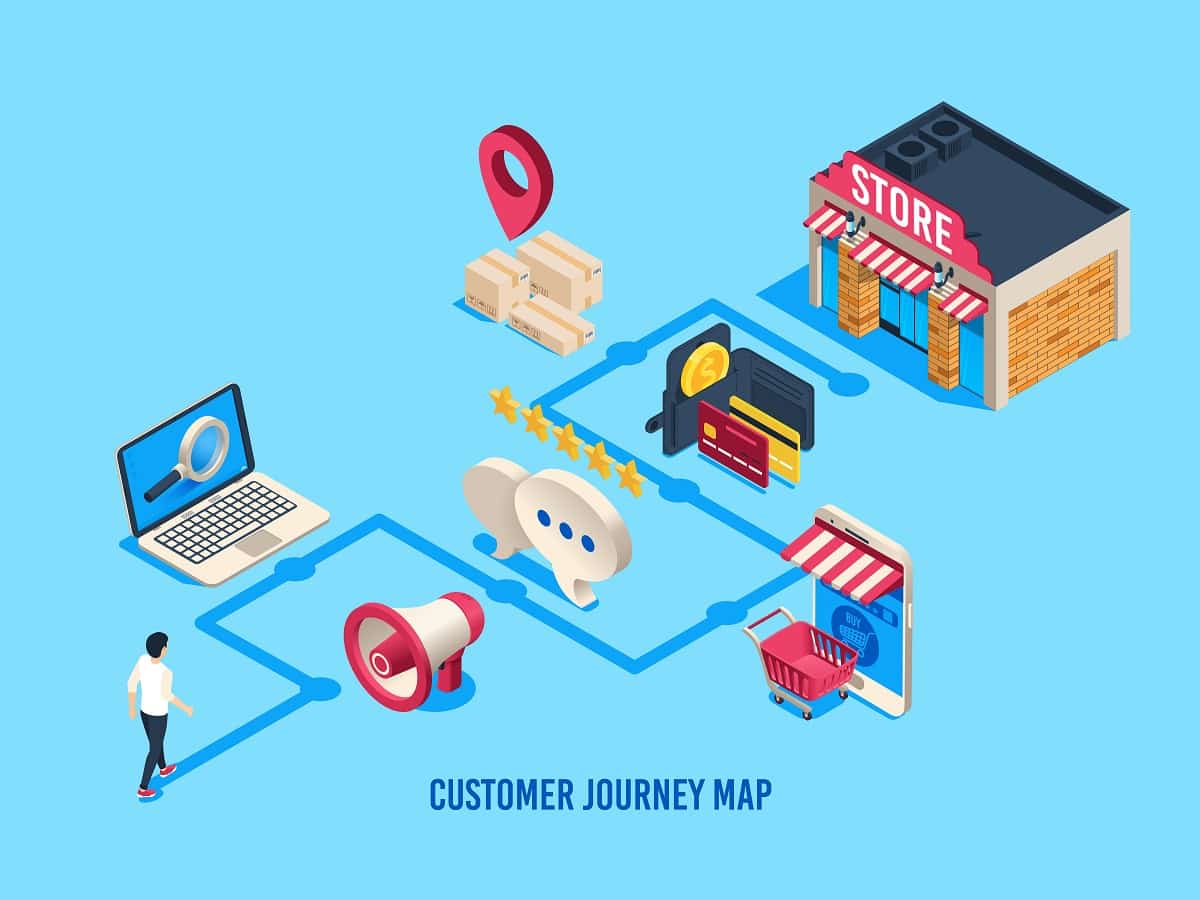Everybody knows that customer experience can make all the difference in winning and retaining customers. But you might be surprised at just how crucial it really is.
According to CX consulting firm Walker, 86 percent of customers say they’re willing to pay more for a great experience. And experience is expected to become the key differentiator for brands as soon as next year, even more important than price or product.
In a complex omnichannel environment, though, ensuring a consistent and compelling experience is harder than it looks. To make it easier for customers to get what they want, and to prevent churn, more marketers are using customer journey maps and customer journey analytics to optimize the buying experience and uncover hidden problems in the sales and marketing funnel.
Maps and analytics are two powerful, complementary and very different tools. Below, we’ll explain what each one does, why they’re different, and how they combine to make you even more effective.

What Is a Customer Journey Map?
A customer journey map is a visual representation of every interaction that the typical, ideal customer has with your company. Many companies create a map for each of their buyer personas. The goal is to put yourself in the shoes of your customer, so you can understand their motivations and frustrations as they progress, step by step, through your funnel.
Building a map means creating an inventory of every touchpoint between your customer and your company. Done right, this should be wide-ranging, encompassing email, affiliate marketing, ads, social media, online reviews, your website, online ordering, packaging, customer service, billing, and much, much more.
By creating a customer journey map, your company develops a clearer sense of what your customers are experiencing when they buy from you. It can be eye-opening. You might discover problems where you never expected them. And that can help you address these issues so you reduce customer churn and increase the lifetime value of your customers.
Customer maps are also a powerful tool for designing ideal experiences for customers. It opens your eyes to opportunities to make the buying process even easier and more enjoyable for shoppers.
What is Customer Journey Analytics?
Customer journey maps are focused on the quality of the customer experience. Customer journey analytics is a more quantitative approach. And it operates on a much larger scale.
Customer journey analytics gathers data on every customer interaction for every customer, not just a few personas. By applying machine learning techniques, marketers can determine all the paths that customers take to making a purchase, and that gives important clues about the most common and most effective methods for reaching those particular clients at the optimal time. It also shows you the most common paths that didn’t end in a sale, so you can remove friction or intervene with better messaging or offers, personalized to the individual.
And unlike a customer journey map, which tends to be a fixed or static report, customer journey analytics should operate in nearly real-time, so you can respond quickly to changes in customer behavior.
This requires massive amounts of data, and a platform, process and team for managing it. You’ll need a data warehouse for storage, as well as an analytics platform that can bring together data from multiple sources and unite it all in normalized datasets.
You’ll also want the support of people who can help you unify, blend and normalize data from multiple sources that don’t always “speak the same language.” They’ll need to understand machine learning and other advanced data science techniques, too.
Which Is Better — Customer Journey Maps or Analytics?
Trick question: In a perfect world, you should use both. A customer journey map is an easier, more cohesive way to understand what it feels like for your buyers to interact with your company. And it’s important to use customer journey analytics because it grounds your observations in data — not just for a few personas, but for all your customers. Your data can enhance your map, making it more accurate.
Together, these tools will help you develop a customer experience that your clients will love — and hate to leave.
Take the Next Step on Your Journey
Customer journey analytics is a core discipline for Alight Analytics, and our ChannelMix platform is uniquely suited to the challenge of managing the multiple data sources required for these kinds of insights, at the speed and scale you need. Our services team also can supply the expertise in data science and strategy necessary, freeing you from the need to hire full-time staff.
Schedule a call today to learn how we can help you increase your insight and revenue!
